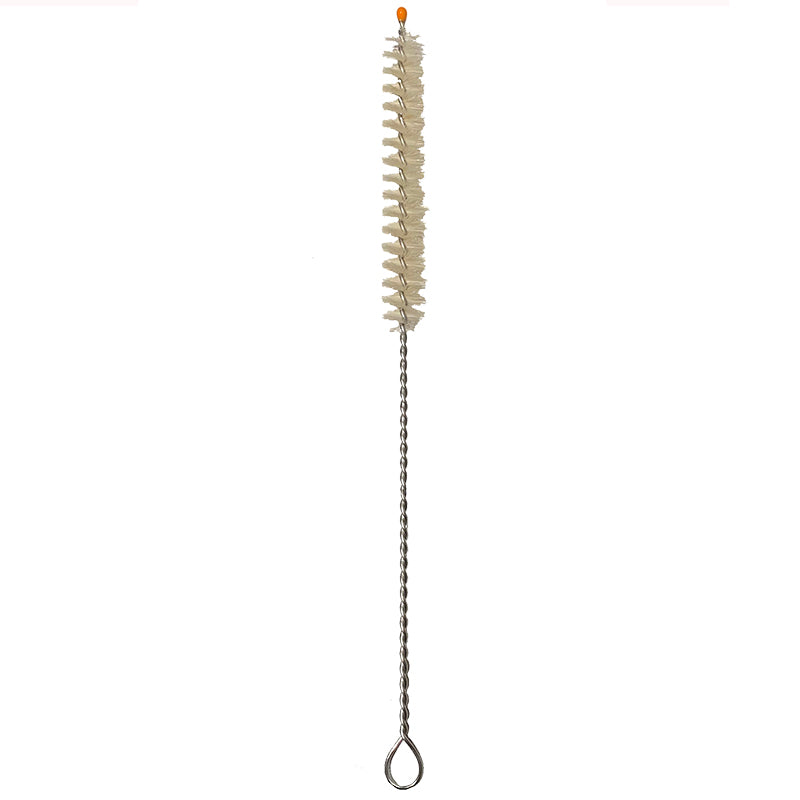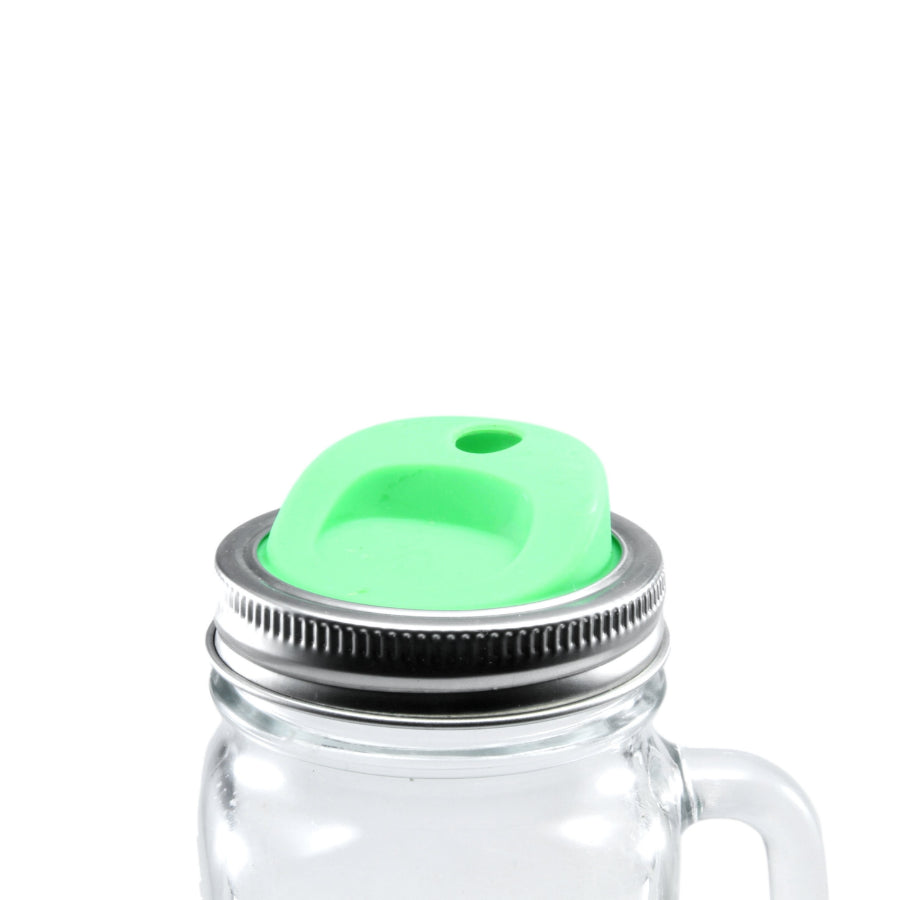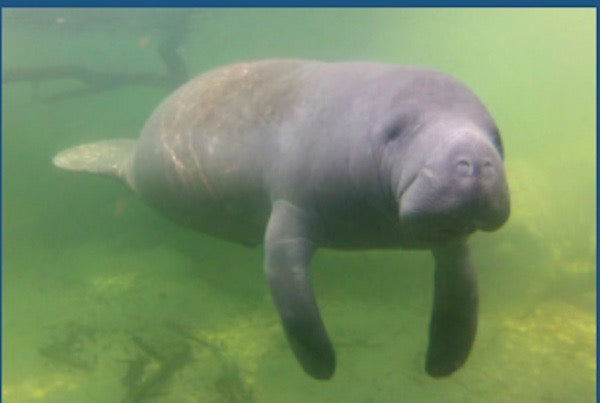Our Improbable Tale of How We Came to Love Manatees
The GlassSipper manatee reusable glass straw is one of our own sentimental favourites. We are also proud to support the Save The Manatee Club based in Florida, a nonprofit organization devoted to protecting manatees and their aquatic habitat. Manatees are one of the truly good guys in the Animal Kingdom. Shy, family centred, often playful, and as cute as all get out with their hound-dog eyes, whiskered jowls, zaftig* bodies, and flat round tail. Though not GlassSipper’s number one seller - our turtle reusable glass straw takes that title - manatee straws are beloved by a devoted community of manatee lovers. Still, many GlassSipper fans have never even heard of manatees and encounter these gentle maritime giants for the first time on our website.

It wasn't that long ago that we too were completely unaware of the manatee. Our attachment to manatees began back in 2008 while on a family road trip to Florida when our sons were four and six years old. The first stop on our trip was Saint Augustine on the Atlantic coast of the state. Saint Augustine is the oldest city in the United States, founded in 1564 by Spanish explorers. Today, Saint Augustine has a beautifully restored historical quarter, fabulous beeches, and its famous Alligator Farm - which was the number one destination on our boys’ list of must-do things in town.
Ironically, we almost missed out on Saint Augustine and, as a consequence, would have remained unaware of manatees, perhaps even to this day. When we tried to book a room in Saint Augustine every hotel said the same thing - “Nothing available - it’s Bike Week.” We had visions of hundreds, maybe even a 1,000 or more, spandex-clad cyclists pedalling into Saint Augustine on their fancy light-as-a-feather carbon fibre 20-speed bicycles. About to give up, we finally got the last room in a motel a few blocks outside the historical district.
Driving into town we prepared to navigate through streets filled with bicycles. Strange … we hardly saw any bicycles at all. What we did see as we neared our hotel, however, were motorcycles. Dozens and dozens of motorcycles. Yamahas, Kawasakis and, of course, Harley-Davidsons. When we turned into the parking lot of our motel we saw rows of motorcycles stretching from one end of the lot to the other. And no spot for our car. We had stumbled into Daytona Beach Bike Week - one of the two largest gatherings of motorcycles in the world. Though centred in Daytona Beach, an hour south drive along Highway A1A, Bike Week had grown so large in recent years that it encompassed the Florida coast all the way to Saint Augustine.
The next morning I approached a young man in our parking lot polishing up the chrome on his BMW “bike”. “There must be at least 30 or 40,000 motorcycles here for Bike Week,” I remarked. He looked at me like I had just landed from another planet. “More like 400,000,” he chortled. Turns out that Bike week, which just celebrated its 79th year, annually attracts from 400,000 to 500,000 bikers to the area.
Every way we turned there were motorcycles and tattooed bikers. Keep in mind that this was before the days when even grannies and schoolkids proudly displayed their “rebel” tattoos. Even the Alligator Farm was overrun with bikers gawking at the albino alligators and24 different species of crocodilians. We had to prop our boys on our shoulders for them to get a view over the leather-clad mob of the noon feeding frenzy at the Alligator Lagoon. And forget about the restaurants. There wasn’t a table to be had anywhere near the historical district or along the beaches.
So we started to ask the locals where we could get a meal that had kid-friendly wholesome food and good salads. A number of people recommended the Manatee Cafe, which was a 10 minute drive away from the tourist area. Strange name, we thought, but it seemed like our best bet for finding an available table and healthy food.
The Manatee Cafe was perfect. And not a bike in sight. Calm, welcoming, very local, with a menu featuring omelettes, waffles, burritos, sandwiches, salads, pizza, homemade cookies and pie - and a free table! While waiting for our order we examined the paintings and photographs of manatees which covered the light spa-green walls. The food was exactly what we hoped for and the Manatee Cafe became our go-to restaurant throughout our stay - and during our return visit two years later. It was also at the Manatee Cafe that we learned that manatees are Florida’s official state marine mammal.
Fast forward to February 2010. Our hometown Vancouver was hosting the Winter Olympics. As the crowds and chaos descended on the city we decided to get out of Dodge and do a follow-up roadtrip to Florida. Since our first visit we had studied up on manatees, and were not only planning on seeing manatees in the wild, we were determined to swim with them! We learned that during the summer months manatees commonly fan out north to the Carolina coast and west to the mouth of the Mississippi. On particularly warm summers manatees can swim as far north as New England. But year after year, in the winter the manatees all return to Florida and head upstream to lounge in the warm spring-fed waters of the rivers north of Tampa where the temperatures remain a consistent 72 degrees F year-round. Fortunately for the manatees, Florida has the largest number of artesian springs in the country.

We arrived at Crystal River Wildlife Sanctuary late at night so we could be on the first manatee tour the next morning at 6:00 a.m. when the manatees are most active. It was still dark in the morning when we all got fitted for wet suits, masks, snorkels and flippers. We then huddled together in a flat-bottom boat as we headed upriver to the gathering area of the manatees. When we arrived we could see several hulking shadows hovering under the water in the river grass along the bottom. The only part of the manatees we could see above water were their noses when they surfaced for air.
Our younger son, 6-year-old Adin, refused to go near the ladder along the side of the boat. 8-year-old Ezra made it into the water, barely, beforing panicking and clamouring to get out. While the boys soothed themselves with hot chocolate, my husband and I eased back into the water. Excited, we swam towards the manatees, which looked like massive grey blow-up pool toys. But as we approached, the manatees immediately backed away, keeping their distance. We quickly realized that the only way to get near the manatees was to float motionlessly in the water, and let the manatees come to us. Slowly the curious manatees eased in close, and before long we were face to face.
Manatees usually move at about5 miles an hour, but can accelerate to 15 miles per hour in short bursts - a feat that we certainly did not witness. Since manatees have fewer neck vertebrae than other mammals, they have to turn their entire bodies if they want to look around.Despite their massive bulk, the manatees moved with remarkable grace.
Though 70 degree seems warm in theory, we soon discovered that laying motionless in 70 degree water - even in a wetsuit - is pretty darn cold. I survived around 10 minutes. My husband Fred hung in there for about 30 minutes before he too pulled himself up the ladder, shivering. Hot chocolate never felt so good. Despite the chill, getting close up and personal with the manatees was a thrill - and definitely the highlight of our Florida road trips!
Though facially similar to a tuskless walrus,manatees are most closely related to the elephant than to other marine creatures. Because manatees typically move so slowly, algae and barnacles often attach to their backs.They graze on aquatic plants, primarily sea-grass, for about eight hours a day and wolf down 10-15% of their weight daily. Sometimes called sea cows, adult manatees typically weigh up to 1,300 pounds and measure about 13 feet in length. While active, manatees surface to take a breach about every 30 seconds, but will only come up for air every 20 minutes while sleeping.
Manatees have no natural enemies. Even 12-foot long alligators give manatees the right of way. When a manatee wants to get by an alligator blocking its path the manatee often swims directly into the gator and nudges it out of the way. Their biggest threats are watercraft, pollution, and loss of habitat. Since 1966 manatees have been on the endangered list. The current population of Florida manatees is between 5,000 - 7,000. Manatees who manage to avoid power boats live an average of 40 years.
So if you’re ever in Florida, don’t miss the chance to swim with the manatees. There’s nothing like it! And if not, you can always do the next best thing and enjoy your favorite beverage with one of our manatee eco-friendly reusable glass drinking straws.
*Zaftig -Yiddish word meaning "juicy" or "succulent" which is also used to describe “plump”






